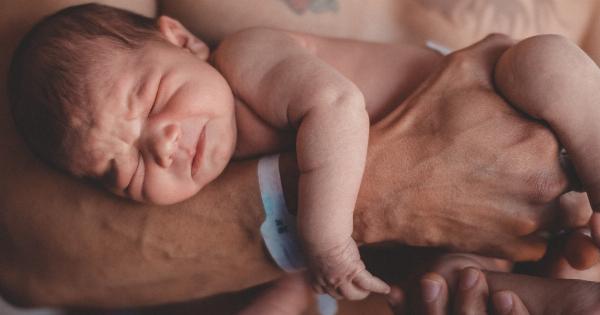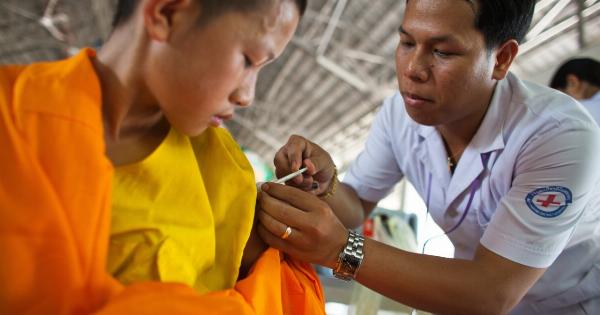A caesarean delivery, also known as a C-section, is a surgical procedure to deliver a baby through incisions made in the mother’s abdomen and uterus.
While traditionally seen as a medical procedure solely for the mother and the healthcare professionals involved, there has been a growing recognition of the importance of a father’s involvement in the birthing process. In the case of a second caesarean delivery, the father can play a significant role in providing emotional support, advocating for the mother’s needs, and participating in the overall experience.
This article explores the various ways in which a dad can contribute and be actively involved in a second caesarean delivery.
1. Preparing Together
Prior to the scheduled caesarean delivery, it is crucial for the couple to prepare themselves both physically and emotionally.
The father can play a vital role in ensuring that both he and the mother are well-informed about the procedure, potential complications, and post-operative care. This can involve attending prenatal classes, reading books on childbirth, and discussing any concerns or questions with healthcare professionals.
By actively engaging in this educational process, the father can offer much-needed reassurance and support to the mother.
2. Being Present in the Operating Room
Unlike vaginal deliveries, where the father’s presence in the delivery room is more common, caesarean sections may have stricter policies regarding who can accompany the mother during the procedure.
However, many hospitals now recognize the benefits of having a support person present in the operating room during a caesarean delivery, and fathers are often allowed to fulfill this role. The father’s presence can provide the mother with a sense of comfort and security, helping to alleviate anxiety and fear associated with the surgical environment.
3. Assisting with Hospital Procedures
During a second caesarean delivery, certain procedures such as intravenous line insertion, monitoring devices, and anesthesia administration may need to be performed.
The father can support the mother by actively participating in these procedures, such as holding her hand, offering words of encouragement, or engaging in distracting conversations to ease any feelings of discomfort or nervousness.
4. Emotional Support
Undergoing a caesarean delivery can be emotionally challenging for the mother, particularly if she had a previous traumatic experience or anticipated a different birth plan.
The father can provide emotional support by offering words of affirmation, reassurance, and actively listening to the mother’s concerns. By being present and empathetic, the father can help create a positive and nurturing environment, allowing the mother to focus on her well-being and bonding with the newborn.
5. Bonding with the Baby
While the initial moments after a caesarean delivery may be dedicated to medical procedures and assessments, the father can actively participate in bonding with the newborn in the minutes and hours that follow.
Depending on the hospital’s policies, the father may be able to hold the baby skin-to-skin, providing warmth and comfort. This contact not only strengthens the father-child bond but can also have positive physiological effects, such as stabilizing the newborn’s heartbeat and temperature regulation.
6. Advocating for the Mother’s Needs
During a second caesarean delivery, the mother may be limited in her movement and might require assistance with various tasks, such as breastfeeding, obtaining pain medications, or communicating her needs to healthcare professionals.
The father can act as an advocate, ensuring that the mother’s requests are communicated effectively. This includes advocating for her pain management, addressing any concerns she may have, and assisting in breastfeeding support, if desired.
7. Caring for the Mother and Baby
After the caesarean delivery, the mother may experience discomfort and require rest to aid in her recovery. The father can take an active role in caring for the mother and newborn, assisting with diaper changes, feeding, and comforting the baby.
By helping with these tasks, the father not only lightens the mother’s load but also strengthens the bond between the father and the newborn.
8. Encouraging Family Bonding
A second caesarean delivery often involves the presence of older siblings or family members excitedly awaiting the baby’s arrival.
The father can help facilitate bonding between the newborn and family members, ensuring that everyone feels included and involved in the joyous occasion. By promoting a sense of togetherness and support, the father plays a crucial role in creating a positive and loving environment for the entire family.
9. Postpartum Emotional Support
In the days following a caesarean delivery, both the mother and father may experience a range of emotions as they adjust to their new roles and responsibilities.
The father can offer emotional support by actively engaging in conversations about their experiences, sharing his own emotions and concerns, and reassuring the mother that she is not alone in navigating this new chapter of their lives. This open communication helps foster emotional connection and enables the couple to face any challenges as a team.
10. Celebrating the Journey
The birth of a child is a momentous occasion, and despite the delivery method, celebrating the journey is essential.
The father can organize and plan special ways to commemorate the birth of their child, such as creating a photo album, writing a letter to the baby, or organizing a small family gathering. By actively participating in these celebratory activities, the father reinforces his commitment to the family and creates lasting memories for all.






























